- Home Page
- Energy 101: Resources to Help Understand Energy
- Best Thermostat Temperatures for Summer & Winter

Best Thermostat Temperatures & Settings for
Summer & Winter
When summer and winter bring some of the warmest and coldest temperatures outside, it’s common to think ‘what temperature should my house be?’. Constantly changing your thermostat temperature can leave you feeling uncomfortable and frustrated. And these feelings could be met with a higher-than-expected energy bill. Keeping your house cool in the summer and finding ways to stay warm in the winter will help you deal with the extremes, but you still need to know the best temperature for your home.
Click on each link to discover ideal home temperature settings:
- Best thermostat temperatures
- What temperature to set your thermostat in the winter
- What temperature to set your thermostat in the summer
- Ideal home temperature for sleeping
- Ideal home temperature for houseplants
- Ideal home temperature for pets
- Ideal home temperature for infants and toddlers
- Best places to install a thermostat in your home
- Locations to avoid placing your thermostat
Best Thermostat Temperatures
Determining the ideal home temperature and thermostat setting should start with answering these guiding questions:
- What temperature should my house be?
- Do energy-efficient thermostat settings differ from season to season?
- Where should I place my thermostat in my home to achieve maximum energy efficiency?
When it comes to thermostat temperature settings, people typically fall into one of two overarching categories: those who set the thermostat at one temperature and leave it there, and those who don’t. From there, each side usually has a number of often reasons why theirs is the ideal thermostat temperature. And so, the battle of the thermostat begins.
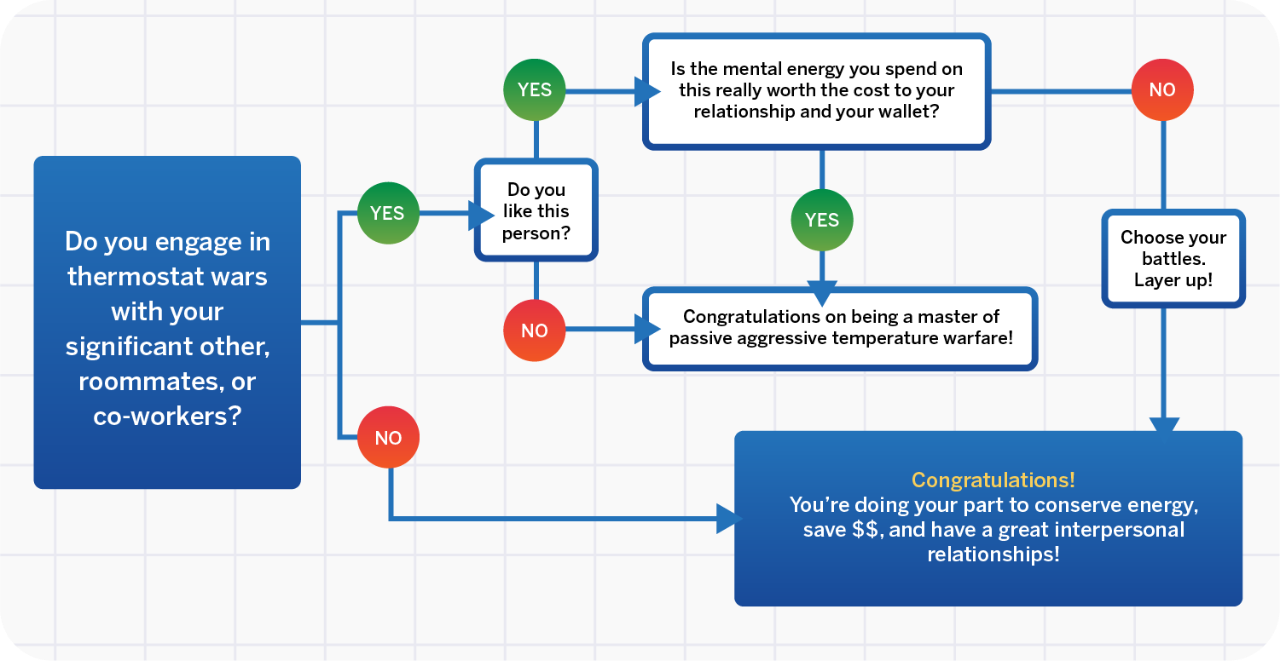
To help encourage peace at home, we’re going to take a look at what some of the experts have to say about recommended thermostat settings. The information might not end the thermostat conflicts in your home, but at least you’ll be armed with information about thermostat temperature settings.
What Temperature Should You Set Your Heater’s Thermostat to in the Winter?
Preparing your home for winter can bring feelings of stress and an urgency to be prepared. But no matter how prepared your home is, you will still need to make a decision about the temperature at which to set your thermostat. The ideal thermostat temperature in the winter is 68 degrees Fahrenheit when you’re at home. Energy.gov suggests that 68 degrees is a good room temperature while you’re awake at home but recommends lowering it while you’re asleep or away.
Lowering your thermostat 7-10 degrees for eight hours a day can reduce your annual heating expenses by as much as 10 percent. That’s a potential savings of as much as 1 percent for each degree if the if the temperature is lowered for at least eight hours. EnergyHub says that for each degree you lower your heat, you can save 3 percent or more on heating costs. Popular Science agrees 68 degrees is a normal temperature for the winter and suggests layering clothing as a way to stay warm in the cooler house temperature.
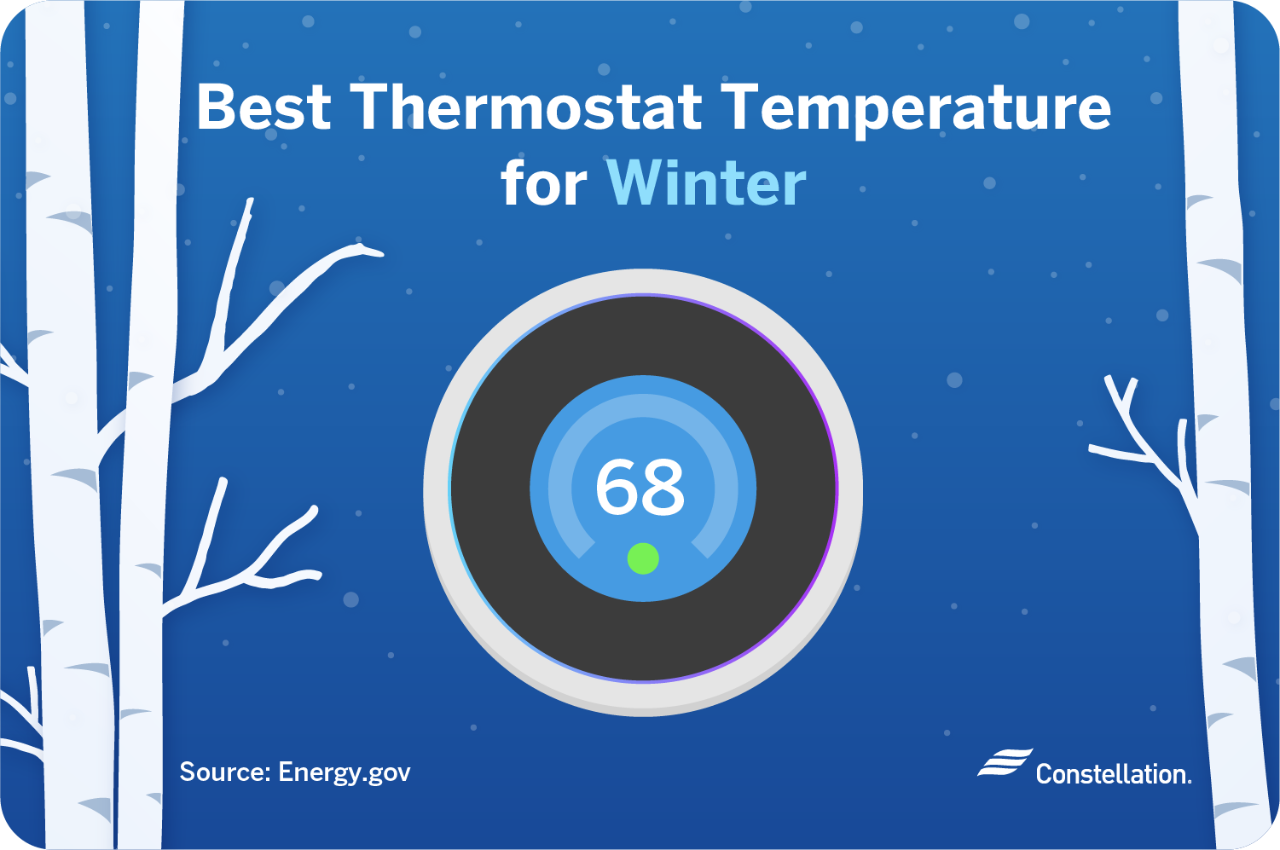
What Temperature Should Your Thermostat be Set to in the Summer?
If you’re wondering what temperature is best during the summer, you’re not alone. You want to be comfortable, but also use an efficient temperature that doesn’t potentially increase your energy costs. The best thermostat setting for summer is 78 degrees Fahrenheit when you’re at home. Energy.gov also suggests raising your thermostat or turning it off entirely when you are away in the summer. Programmable thermostats can help make monitoring your home’s temperature while you’re away easy. The thermostat can be set to start cooling shortly before you arrive home, so it’s the ideal temperature when you walk in the door.
Whatever temperature you, your family, or your partner decide is the ideal home temperature, do not try to cool your home faster by setting your thermostat at a colder setting than normal when you turn on your air conditioner. Energy.gov says this strategy does not, in fact, cool a home any faster and ultimately can lower the temperature too much and create an unnecessary expense.
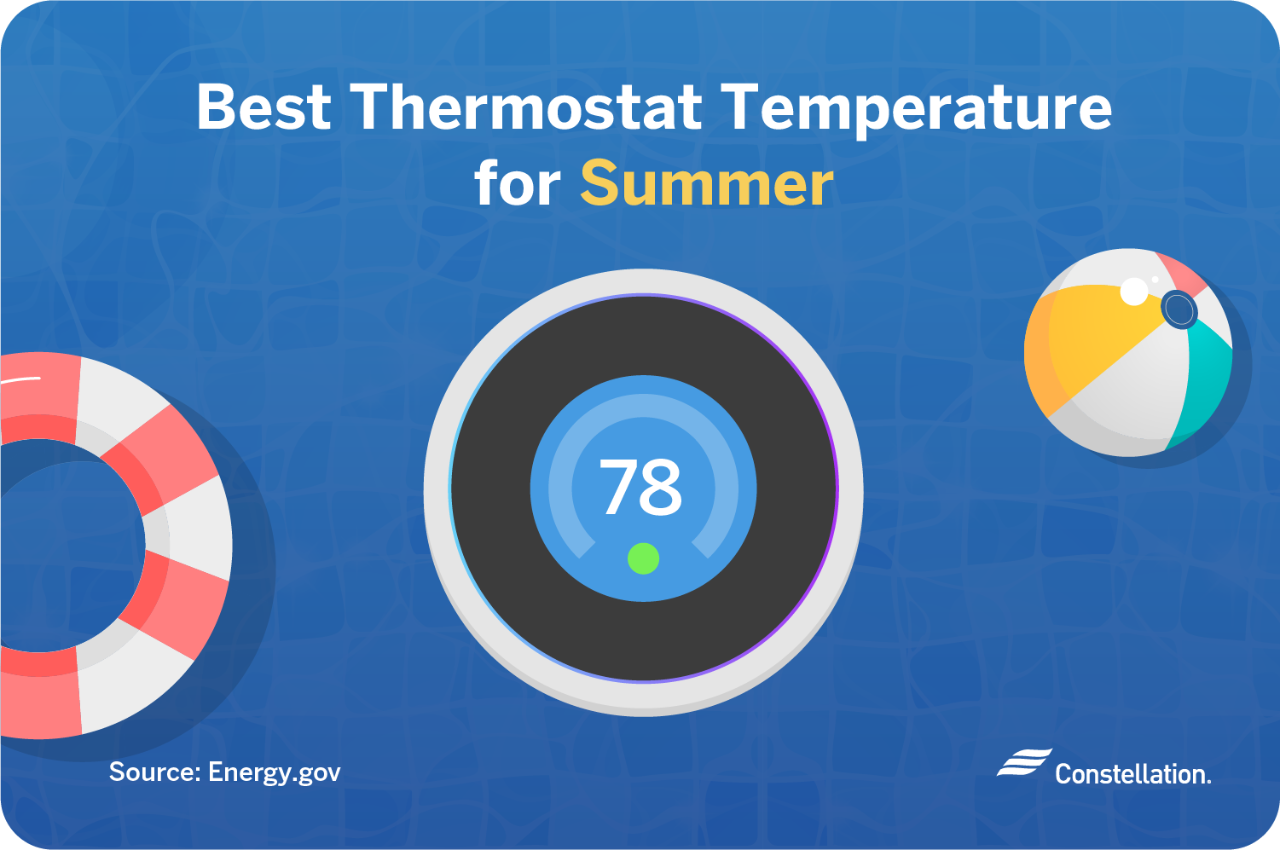
What temperature should you keep your house at?
Or better yet, “What is the most energy saving temperature to set my thermostat at?” According to ENERGYSTAR.gov, the ideal home temperature should be between 70 to 78 degrees Fahrenheit. To maximize energy efficiency, turning your thermostat up or down by 8 degrees while you’re away from your home can help reduce your heating and cooling costs.
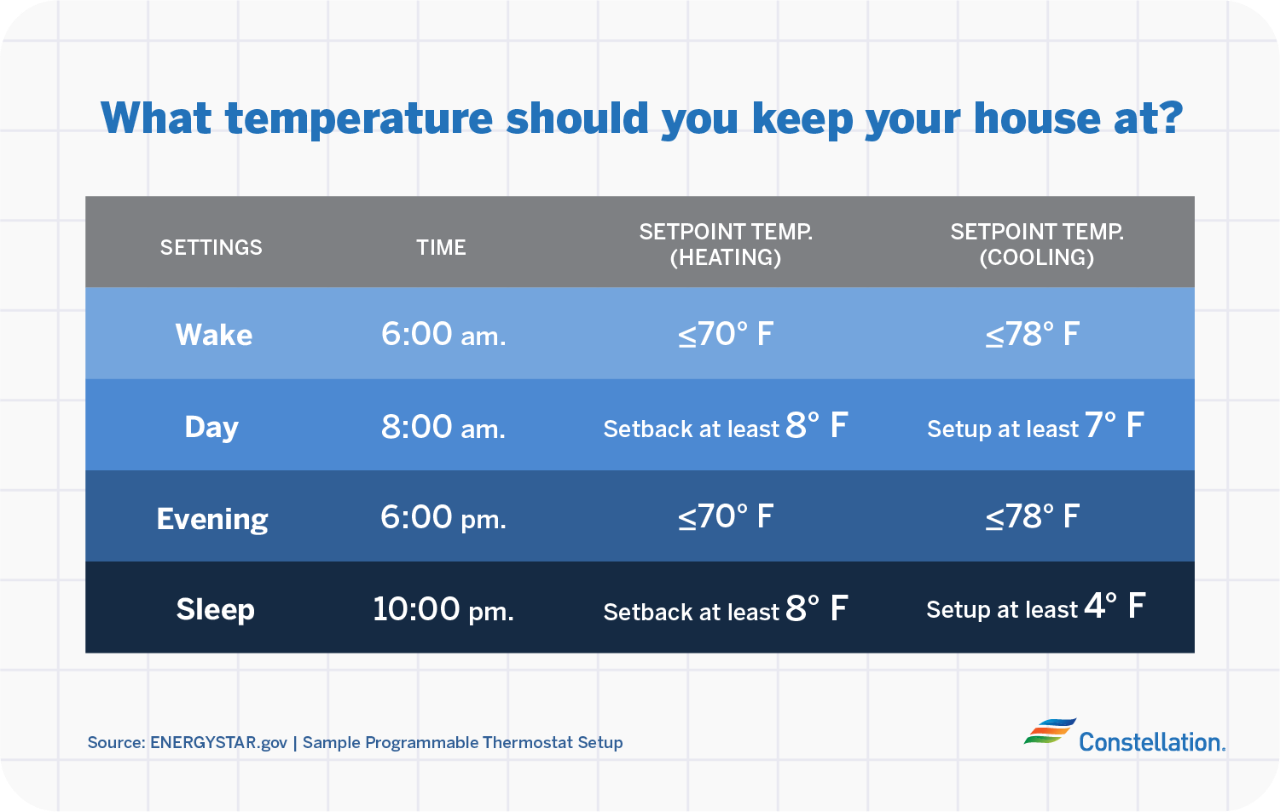
What is the best temperature for sleeping?
The ideal home temperature for sleeping is generally between 60 and 67 degrees Fahrenheit -- and you might even sleep better because of it. When you sleep, the set point for your body temperature drops, WebMD says. If it’s too cold or too hot, it throws off your internal temperature, which in turn can make your sleep more fitful.
However, there is one caveat: Everyone’s body temperature is different, and what you may require for comfort during the day might be different during the night.
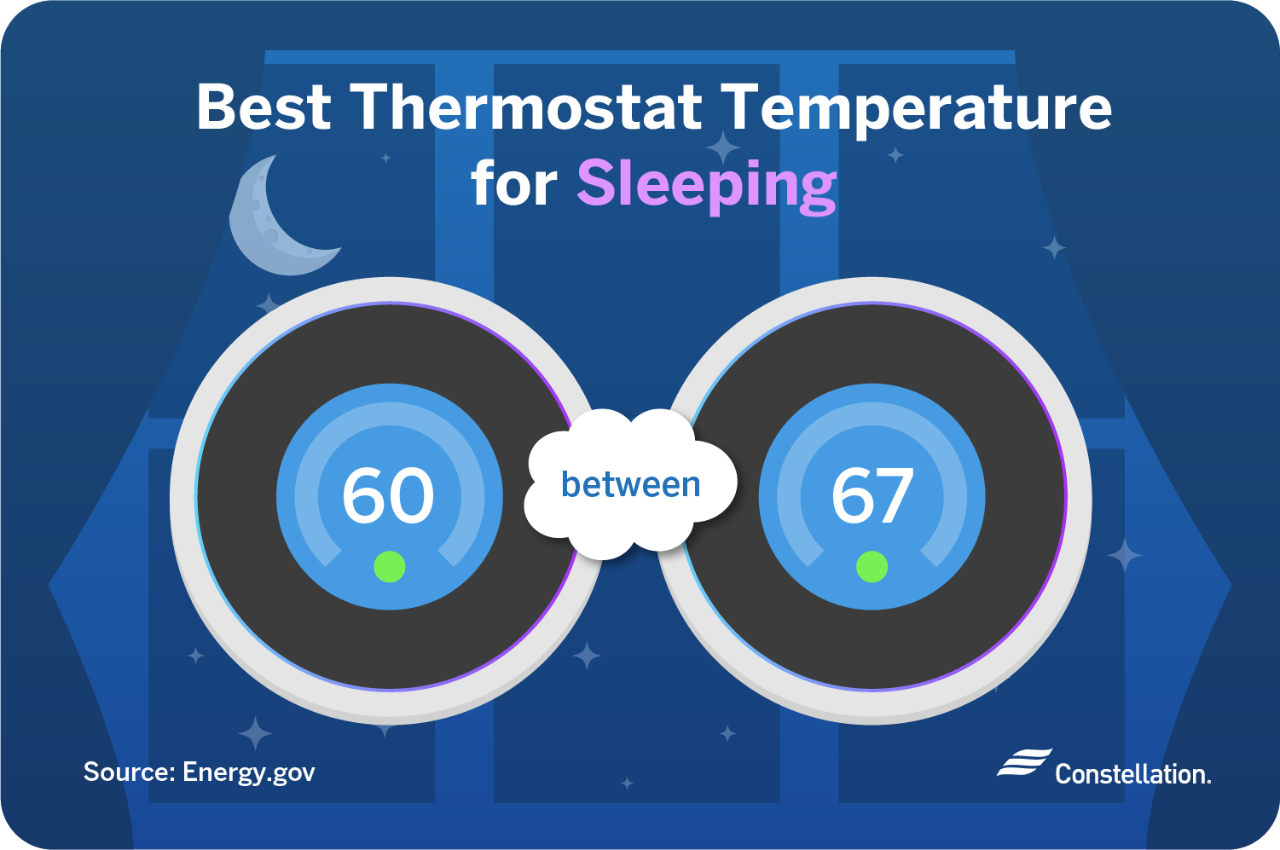
What thermostat temperature is best for my houseplants?
According to House Plants Expert, the ideal temperature for maintaining house plants is around 60 to 75 degrees Fahrenheit. To keep most houseplants alive, try not going below around 50 degrees Fahrenheit or above 85 degrees Fahrenheit.
What temperature should I keep my house with pets at home?
Keeping your home at the recommended energy-saving temperatures of 64 to 78 degrees Fahrenheit will usually work just fine with your pets. In fact, Consumer Watchblog points out that most pets have natural coping mechanisms for slightly hotter or chillier weather (think fur for cold, panting for heat!). If you have more unconventional pets, like tropical amphibians, fish, or arachnids, be sure not to drop the temperature too low, or perhaps install a heat lamp if lower temperatures cannot be avoided.
What is the best temperature to set your thermostat at for an infant?
Setting the ideal temperature for your infant may take some trial and error, depending on your baby’s mood, health, age, etc. However, it’s recommended that room temperatures do not go below 65 degrees Fahrenheit, nor above 74 degrees Fahrenheit.
Where is the best place to install a thermostat in my home?
Being proactive with your thermostat settings can help you achieve energy efficiency, but you may not realize the potential benefits of programmable thermostats if you don’t pay attention to thermostat’s location.
The ideal thermostat location is an interior wall, ideally near the center of the house. When considering your thermostat location, it’s also smart to keep in mind which rooms people use most since these are the rooms where you want the temperature to be the most comfortable.
Locations to avoid placing your thermostat
Where you place a thermostat is critical to achieving maximum smart or programmable thermostat savings. Placing a thermostat too close to a heat source, for instance, will likely make your heating less efficient.
With that in mind, experts advise keeping your thermostat location away from the following:
- Direct sunlight
- Above air vents
- The kitchen
- Hallways
- By doors or windows
Utilizing the tips discussed above can help you achieve ultimate comfort inside, no matter what the temperature is outside. Plus, don’t forget that finding the right type of thermostat for your home can help you achieve the ultimate goal – an ideal home temperature.
You’ve learned all about recommended thermostat settings, want to learn more about saving energy? Get the details on smart home systems, home automation, and any other energy-saving techniques with our Energy Guides!